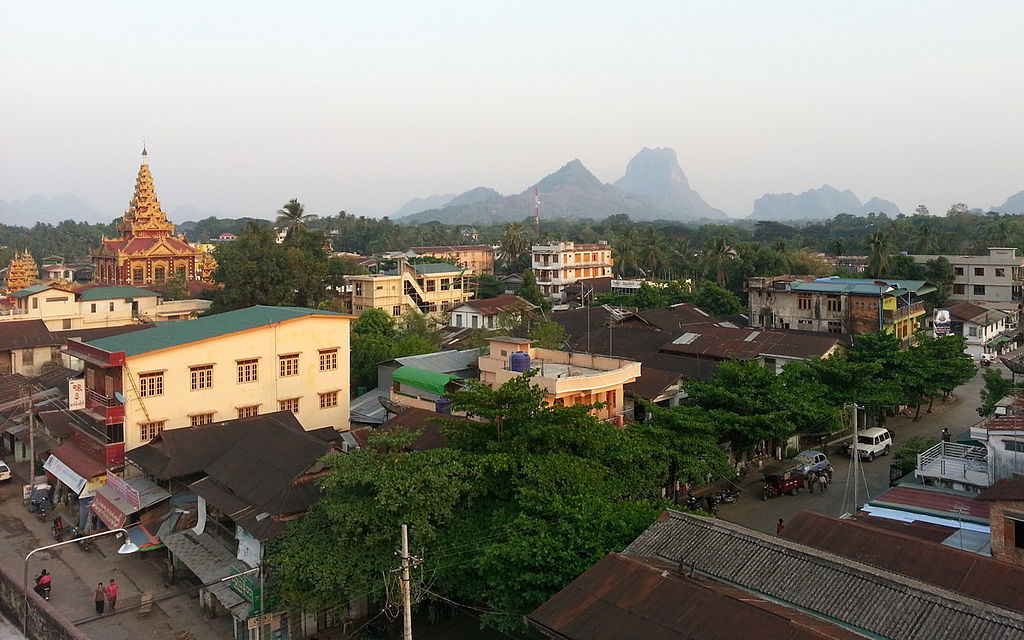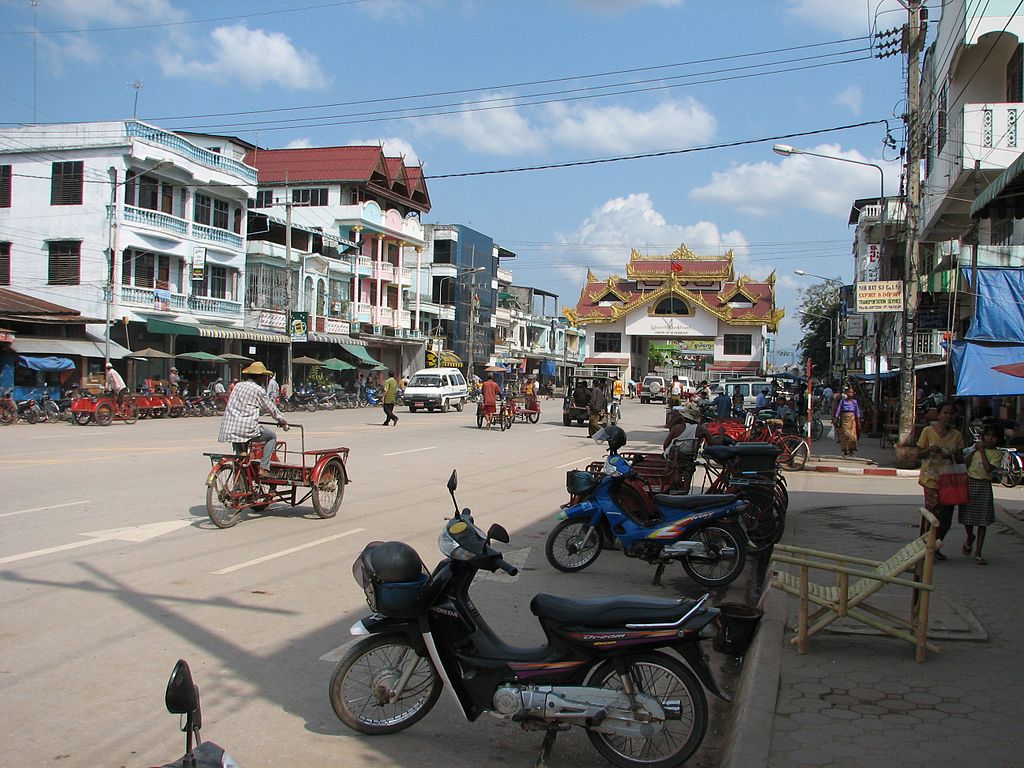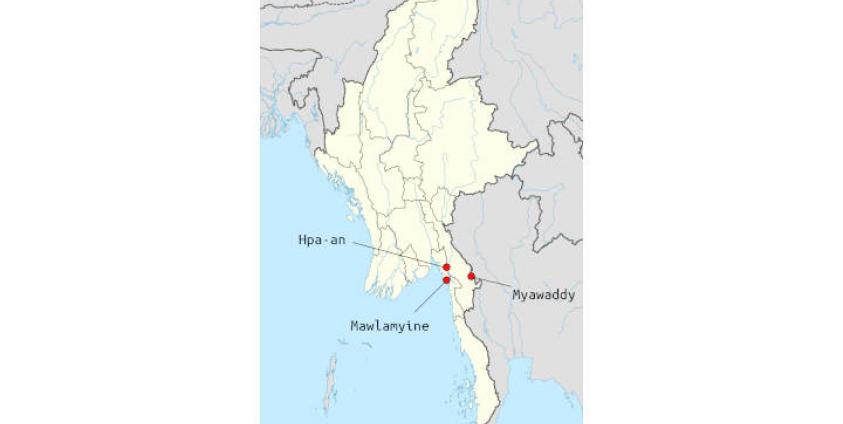According to The Global New Light of Myanmar and Myanmar Ahlin the towns of Mawlamyine in Mon State, and Hpa-An and Myawaddy in Karen State along the Greater Mekong Subregion (GMS) East-West Economic Corridor (EWEC), in accord with the feasibility study reports,will be upgraded.
The project, under the heading of GMS Corridor Towns Development Project, will be undertaken with the Asian Development Bank’s (ADB) loan US$80 million and the Neighbouring Countries Economic Development Cooperation Agency’s (NEDA) loan US$23.4 million.
The loan agreement signing of the project was held at the meeting hall of the Ministry of Construction (MOC) in Naypyitaw on February 24, after the ceremony, which was concluded with Treasury Department Director-General Daw Si Si Pyone of the Ministry of Planning, Finance and Industry and NEDA President Mr Perames Vudthitornetiraks signing and exchanging the agreement.
Reportedly, The MOC will take a leading role to implement the project as an Executing Agency (EA) and the Karen and Mon States’ governments will perform their respective duties as Implementing Agencies (IA), while the Project Implementation Units (PIU) will collaborate with the Project Management Units (PMU) and the Consultant Agencies concerned in order to implement the project and pay back the loans.
The project will facilitate the urban development and basic infrastructure development in Myawaddy, which is a major border trade town, and improve bilateral trade and economic conditions as well as enhance bilateral cooperation between the two countries, Union Minister U Han Zaw of the MOC emphasized.
Feasibility study loans was made by ADB to upgrade water sanitation, improve waste management and build capacity among civil servants in Mawlamyine and Hpa-an are underway for implementation. The MOC also said there are projects to maintain historic buildings in Mawlamyine and draw up plans for a Hpa-an industrial zone and a Myawaddy-Mae Sot joint spatial development project.

Hpa An, Kayin State | wikipedia.org
The cities will use NEDA’s loans to carry out similar water sanitation, waste management and civil servant training projects in Myawaddy. U Han Zaw said the projects in Myawaddy will help improve economic conditions and enhance bilateral trade and cooperation between the two countries. Accordingly, Myawady’s 14,000 families will have clean water access; and 98% coverage of systematic waste collection and management will be undertaken, including capacity-building of civil servants.
U Han Zaw said that it is hoped that the project implementation of the three towns would be able to expand to towns in other states and regions.
Thailand Ambassador Mrs Suphatra Srimaitreephithak, Deputy Minister U Maung Maung Win of the Ministry of Planning, Finance and Industry and NEDA Chairperson Ms Chularat Suteethom also gave their remarks at the ceremonial event in Naypyitaw.
Myanmar is part of the two major economic corridors, which are the East-West Economic Corridor connecting Vietnam’s Dong Ha City with Yangon’s Thilawa Special Economic Zone (SEZ) via Cambodia and Thailand; and the Southern Economic Corridor connecting central Vietnam, Cambodia and Thailand to the planned Dawei SEZ in southeastern Myanmar.
The Southern Economic Corridor with its proponents of the planned Dawei SEZ is gaining importance, which is an $8-billion project in Tanintharyi Region that includes a deep seaport and it would be Southeast Asia’s largest industrial complex.
Reportedly, Myanmar’s section of the East-West Corridor currently isn’t up to the standard and does not function as an international highway due to various problems, such existing roads becoming bottlenecks due to one-way traffic, unpaved roads, traffic difficulties during rainy season and weight limitations and so on.
Japan International Cooperation Agency (JICA) is looking to build an inland highway from Thilawa to Bangkok to shorten the transportation route, including constructing three bridges in Karen and Mon states—the Gyaing-Kawkareik Bridge, the Gyaing-Zathabyin Bridge and the Atran Bridge—as part of the East-West Economic Corridor.

Myawaddy Main Street looking east | wikipedia.org
“The proposed realignment of EWEC links cities with relatively large populations and emerging industrial hubs, and crosses rural areas with good potential to be linked to agricultural value chains. The Pathein–Yangon–Myawaddy section links the two most important agricultural areas of Myanmar—the Ayeyarwady Delta and the East Bago, Mon, and Kayin region,” according to the report “Reviewing of Configuration of The Greater Mekong Subregion Economic Corridors,” published by ADB GMS Secretariat Southeast Asia Department, on November 2016.
While the upgrading of the three towns, especially Myawaddy, fits nicely into the East-West Economic Corridor scheme, it is not yet clear where the place of Shwe Kokko town project building which is still in progress bordering Thailand is supposed to be.
Shwe Kokko, a former garrison town of Karen National Liberation Army formerly known as Kawmoora or Wangkha, on Myanmar side of the Moei river that forms the border with Thailand, is controlled by Saw Chit Thu, who is the chief of Karen Border Guard Force recognized by the government and affiliated to the Myanmar Army or the Tatmadaw.
Accordingly, the project plan will include luxury housing and homes, an entertainment complex, supermarkets, department stores, a police station, an airport, cargo depots, a one-stop-service center, a hotel comprising of 1,200 rooms, casinos, an industrial zone and much more.
This project, dubbed as “Chinatown” by the locals is in fact so ambitious that it is touted as an equivalent of being second only to Hong Kong, China’s special administrative region under one country two system. Reportedly, a 70-year lease from the Myanmar government has been secured, which may be extended up to 99 years. It is believed to be the largest ever overseas investment project by Jilin Yatai Group is expected to be finished in 2027.
For now, while many would rejoice the upgrade of Myawaddy, Mawlamyine and Hpa-An towns and the benefits that would accompany such undertaking, Shwe Kokko will remain a sort of misery project until further transparent clarification are made public by the government and those investing in the project.






